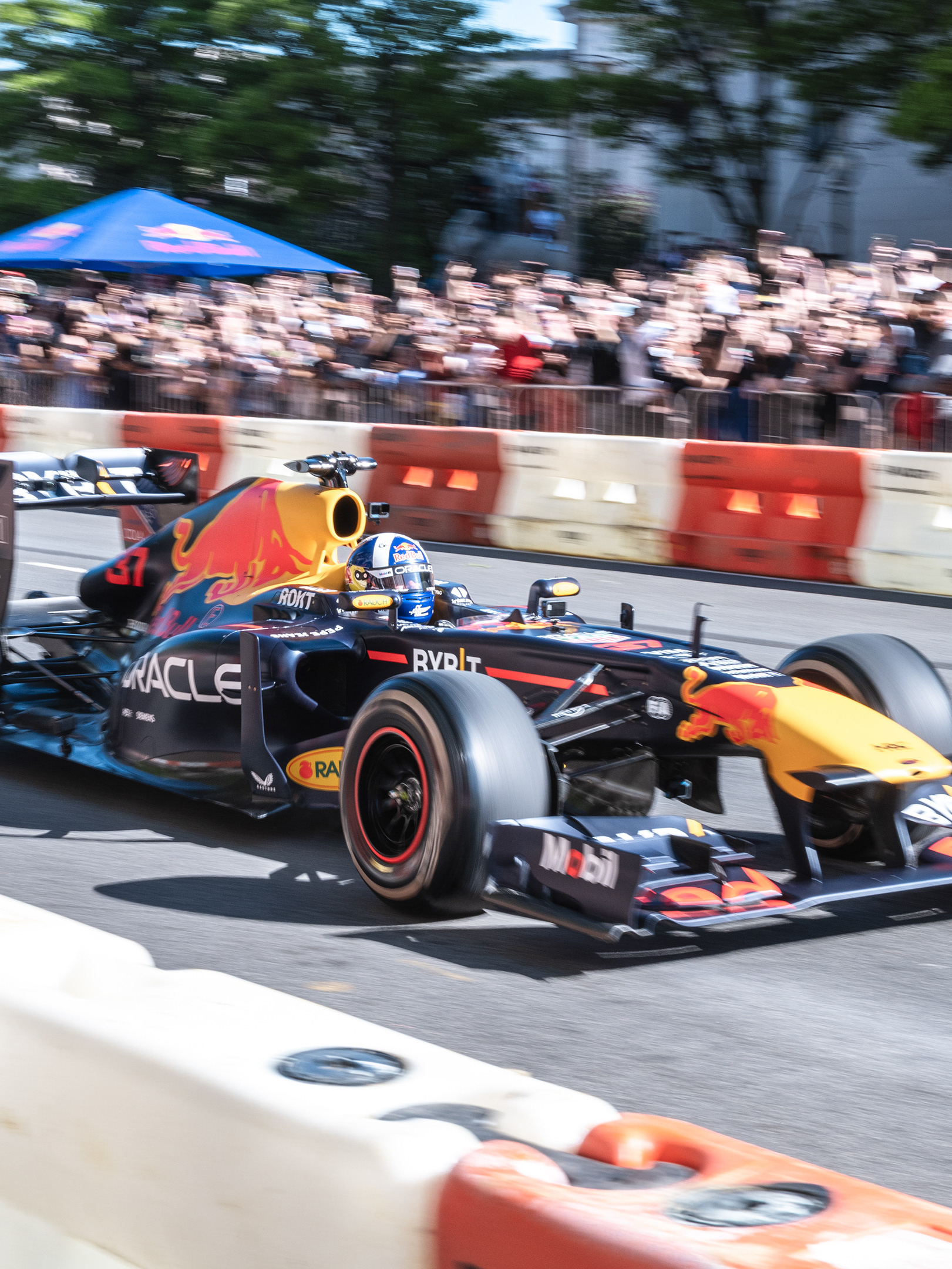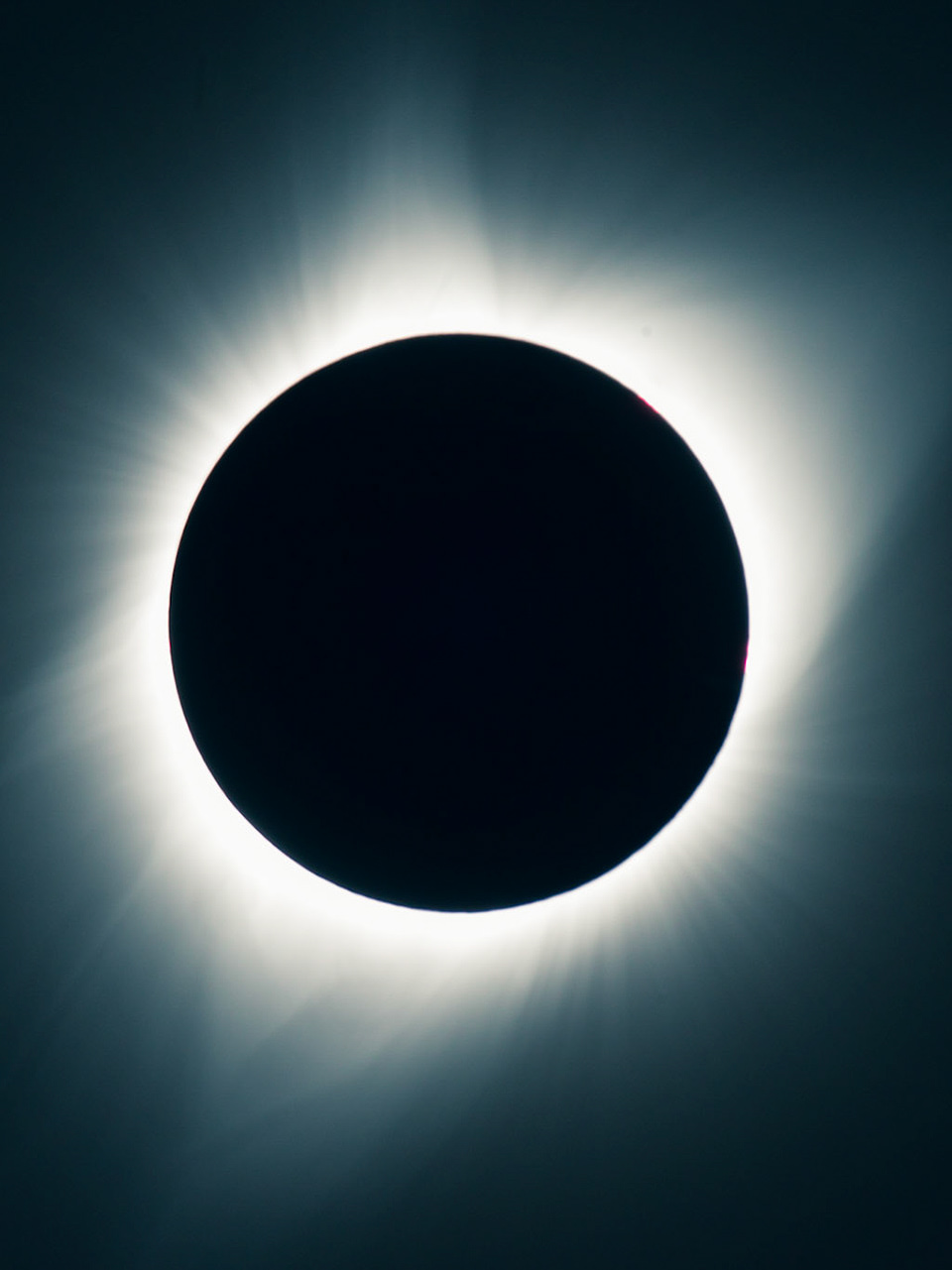The location
In a stroke of bad luck, our original hotel canceled our reservation two months before the eclipse, claiming their planned HVAC upgrade was taking longer than expected. In a stroke of bad planning, I didn't have any backup hotel reservations in case our reservation fell through.
In a stroke of good luck, I was able to find another hotel in a Cleveland suburb that, according to Google Maps, was a block away from a sledding hill. This meant a potentially interesting place to photograph the eclipse, far better than my original plan of “hotel parking lot”, while still avoiding the need to drive anywhere.
Preparation beforehand
The Sunday before the eclipse, we went to the hill at around the same time as the eclipse the next day. It was gorgeous, clear conditions. Perfect for understanding where the sun (and moon!) would be, and the arc they’d trace across the sky the next day. I set up everything I had planned:
• A Nikon Z7 with a 2x teleconverter on the Nikon Z 180-600mm lens, sitting on top of the Sky-Watcher Star Adventurer 2i. Using my phone’s compass, I could point it north(ish), and knowing the latitude (41.36161°), I could angle it up towards where the North Star would be if it were nighttime. I wanted to verify that I could get it at the correct angle, and the star tracker would keep the sun mostly in frame. At 1200mm, it would be a pain to need to hand-track it for three hours.
• A Nikon D800 with a Sigma 35mm f1.4 Art lens. I used Stellarium before the trip to ballpark where the sun should be at the start and the end of the eclipse on a 35mm focal length. I wanted to verify that if I started shooting the sun in the top left corner, based on the timing and movement, it would stay within the frame by the end of the eclipse.
• Both lenses were connected to a Vello Shutterboss II external trigger. It allowed me to set up a timer to fire automatically every five minutes, and also meant I could take a photo without introducing camera shake from pressing the shutter button.
Heading out the day before was invaluable!
• I verified that the star tracker would be decent enough to keep the sun in frame, as long as I checked the framing every ~15-20 minutes.
• The D800 with the wide-angle lens was well framed, and verified that a shot every five minutes would create an aesthetically pleasing sequence as the moon eclipsed the sun.
• I also learned that it would be a good idea to set up close to the wooden fence on the hill. I had no idea how many people would come to this hill for the eclipse, so I wanted to be in a place that was unlikely to have people walking by.
• Wind would sweep over the hill, which normally wouldn’t be an issue, except that it would blow the solar filter off the D800. I would need to find a bit of tape to keep it on.
• We ran into a local, Joe, who was also out at the hill to prepare to shoot the eclipse the next day. He had picked that location because of the good view, and the added benefit of the surrounding nature, birds, and insects that could react during totality. Hearing someone nearby validated that it seemed like a reasonable place to shoot!
The day of
The night before and early morning of, a heavy rainstorm rolled through (bad luck). Thankfully, it left by sunrise, leaving mostly clear skies (good luck). I spent the hotel breakfast trying to listen to Cleveland morning news anchors predict the weather. Clouds were still projected, but they were looking like high-altitude cirrus clouds which shouldn’t impact the eclipse itself.










